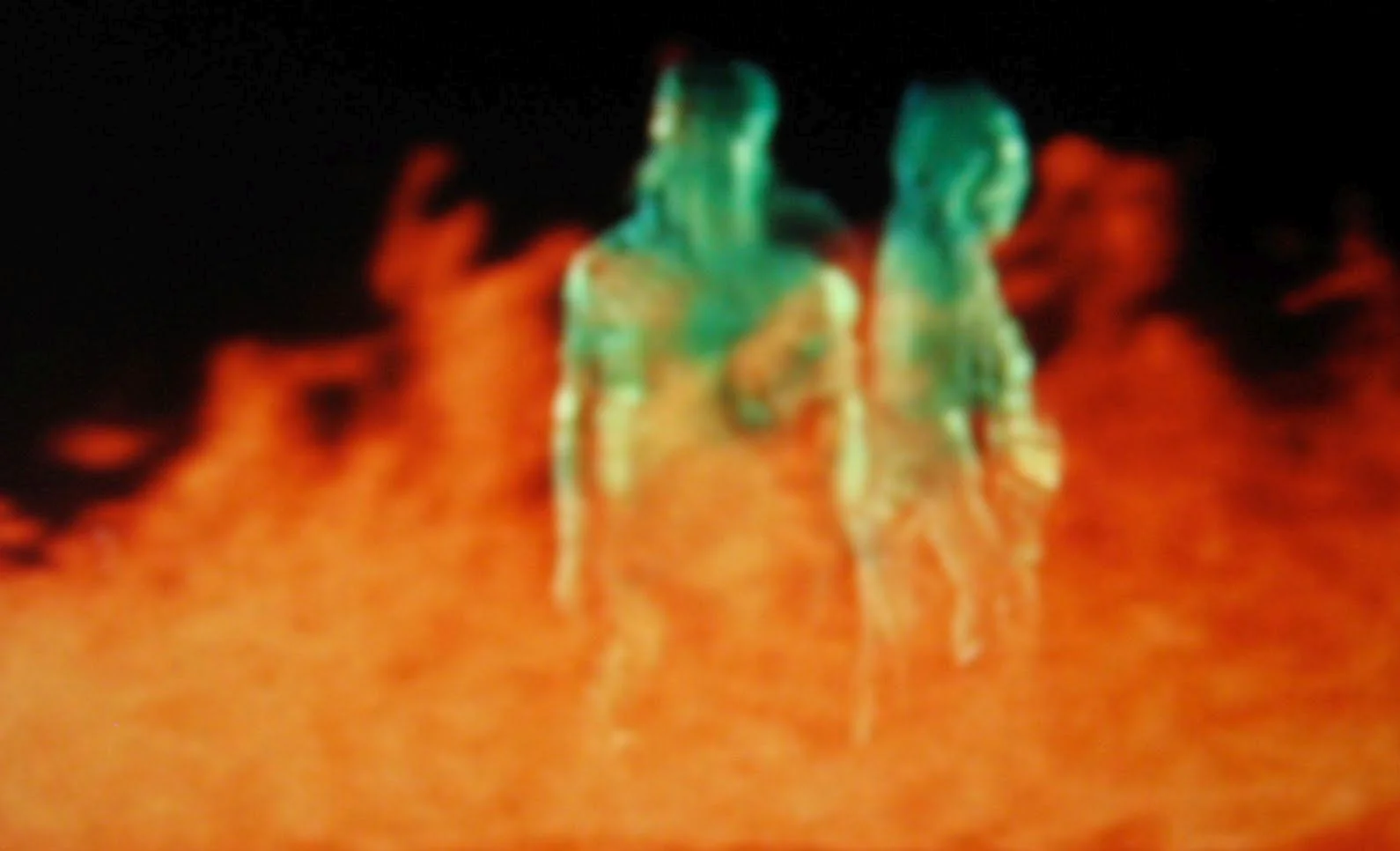Ishirō Honda’s THE H-MAN
Movie review by Dennis McDonald
The thing I remember most about this movie when I was a kid was that it terrified me.
My dad worked part-time at a second run movie theater in Columbus Ohio. I got to see all the movies I wanted to see on weekends for free. Science-fiction films were my favorites. I held a special place in my heart for Toho films such as Ishirō Honda’s The Mysterians which was all I could ever hope for in terms of flying saucers, giant robots, and colorful ray-gun battles.
H-Man, as I recall, was something very different. The story tells of the impact of H-bomb tests on humans exposed to radioactive fallout. In this movie some of those exposed become radioactive glowing green ghostlike specters. At will they turn into living sap-like goo that can engulf other humans and literally melt their bodies. Nothing is left but the melting victim’s clothes.
My brother Keith was horrified I had not seen this "classic" since childhood. He gifted me with a three disc set that also contains two other Toho/Honda films, Mothra and Battle in Outer Space.
I watched the Japanese version with English subtitles. How does H-Man hold up after all these years?
Well, it's not Mysterians. H-Man is an odd film and lacks the giant monsters and machinery of other Toho/Honda films. It's more of a police procedural-cum-horror movie, spiced with an investigation of gangland corruption.
What makes the movie so interesting is the way the weird story is interweaved with such recognizable elements. At first the cops don't believe that victims have been "melted." They suspect an elaborate scheme by crooks to escape rival gangs, with a female nightclub singer at the center who is also seeking a disappeared crook. She has witnessed a “melting” but no one seems to believe her.
Plot points eventually come together, first at the nightclub where the flowing slime creature claims more victims, then in the sewers of Tokyo where the police and the army pursue the H-Man with flamethrowers and burning gasoline.
It's creepy and weird movie with things to like and things that today seem odd and flat.
The flashback scenes where an abandoned freighter is boarded at night by the hapless crew of a fishing trawler are very effective and make very good use of ship models and spooky sets. The trawler crew is introduced to the horrors of watching men melt in front of their eyes leaving nothing but their clothes. Melting effects are cheesy but clever and, from a child’s perspective, must have been downright scary.
Laboratory scenes where scientists duplicate the radiation-induced melting effect on frog specimens are eerie. We watch as the small animals bubble and turn into green goo that, when viewed under the microscope, still lives!
Nightclub scenes are bizarre. This is the late 1950s in Japan. It's more than 10 years since the end of World War II and we seem to be witnessing in the nightclub some of the "westernization" that was occurring in Japan at the time. Only nothing looks right. The scantily clad dancing girls are oddly un-erotic, the female singer sings a dreary ballad (dubbed in English), and the gangsters and their girlfriends sit around like dumb spectators, unsmiling, feigning interest in the jazz-based floor show. My guess is that director Honda’s only experience with scenes like these was from 1930-era Hollywood gangster films. It shows.
As in some other Japanese films there is a lot of verbal exposition in formal settings. We get that here, too, as in the many scenes in the police station where the formal "investigation" unfolds. If you watch Japanese anime as I do you still get a lot of talking/exposition of key plot points. An example is Akiyuki Shinbo's PUELLA MAGI MADOKA MAGICA where much of the complex plot is just plain discussed in the dialogue, not illustrated visually.
One thing I did like very much for seeing the glittering rainbow Toho logo at the beginning of the movie. I remember seeing that as a kid and thinking, "oh boy we're in for some fun!" It's still true.
Review copyright © 2016 by Dennis D. McDonald


